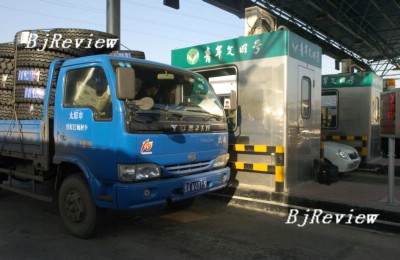
Looking Beyond Polarization
Recently, the debate on where there is polarization between the rich and the poor in China has resurged.
Is there in fact a chasm between haves and havenots? Theoretically, when the poor become poorer and the rich richer, the answer to that question is a resounding yes.
Although less than 3 percent of the total Chinese population still live in abject poverty, most Chinese economists agree that the disparity between the rich and the poor has widened since the mid-1990s. They also predict that the gap is unlikely to narrow in the near future.
The existence of a wealth gap does not necessarily point to polarization until the divide is big enough. According to the World Bank, China's Gini Coefficient-used to measure the disparity between the rich and the poor-reached 0.47 in 2006, much higher than the international warning line of 0.4.
Whether the World Bank's figures are reliable or not is another matter, but the statistics are further proof of the critical situation in today's China: The income of the poorest 10 percent of the population in 2003 was 10 percent lower than that in 2001.
Despite this, it seems that a looming crisis is being ignored, one that will be far more damaging than the polarization itself.
Oriental Morning Post
Make Officials Accountable
According to official statistics, China failed to meet its goals for energy conservation and pollution discharge reduction last year. Instead, it saw an increase in energy consumption per 10,000 yuan of gross domestic product and chemical oxygen demand and higher discharge of major pollutants like sulfur dioxide.
Some sectors, such as the power industry, are major consumers of energy and major producers of pollution. Nevertheless, quite a few enterprises in these industries have done nothing to save energy.
According to Qu Geping, a former head of the country's top environmental protection agency, the failure in energy conservation should be blamed on some leading local officials' indifference toward the issue. However, educating these officials that energy conservation and discharge reduction are the key to economic restructuring and the transformation of the economic growth model is a hard job. Maybe it's time to make performance appraisals include officials' efforts to save energy. An effective mechanism like this will prove to be the best way to ensure achieving goals related to energy conservation.
China Business Times
High Road Tolls Suffocating Economy
Eighteen years after China's first freeway--Shanghai-Jiaxing Expressway-was built, the toll fees collected are valued far above the original 230 million yuan spent on the road. However, with the approval of relevant government departments, operators of the freeway can continue to charge commuters until 2022.
Of the world's 140,000 km of roads that charge fees, 100,000 are in China.
In China, the Central Government's input in road building only accounts for 15 percent of the total investment, while local governments and commercial banks' investment make up more than 80 percent. Besides, the right to operate is always transferred to business groups.
While freeways are charging high toll fees countrywide, China's development is paying a heavy price. Sometimes, in order to avoid paying toll fees, drivers have to take a long route, which means more time spent on the road. In addition, high road tolls are increasing the cost of freight transportation among different regions, making it hard for them to complement each other economically. This is further hampering the development of a unified national market. It's high time we removed this bottleneck to economic growth.
The Beijing News
Pessimistic About CPI
According to a recent survey by China's central bank, most Chinese anticipate that the consumer price index will keep rising this year.
The pessimistic attitude toward consumer prices may affect the stability of the macroeconomy.
While increasing demand for investment and loans is the inherent driving force for price hikes, soaring costs of resources and public services are making other commodities more expensive.
In the current situation, moderate monetary policies aimed at stabilizing domestic consumer prices and maintaining a steady exchange rate are necessary. The government must act before it's too late. The price increases of public commodities and services such as water, electricity, gas, and waste treatment should target corporate users instead of individual residents. The central bank should keep a close eye on price fluctuations, and make use of the interest rate as a leverage to regulate price when necessary. The appreciation of yuan will bring no tangible benefits to ordinary Chinese people while the growing consumer prices will make living more difficult. Against this background, it's impossible to see optimistic price anticipation.
Guangzhou Daily
| 